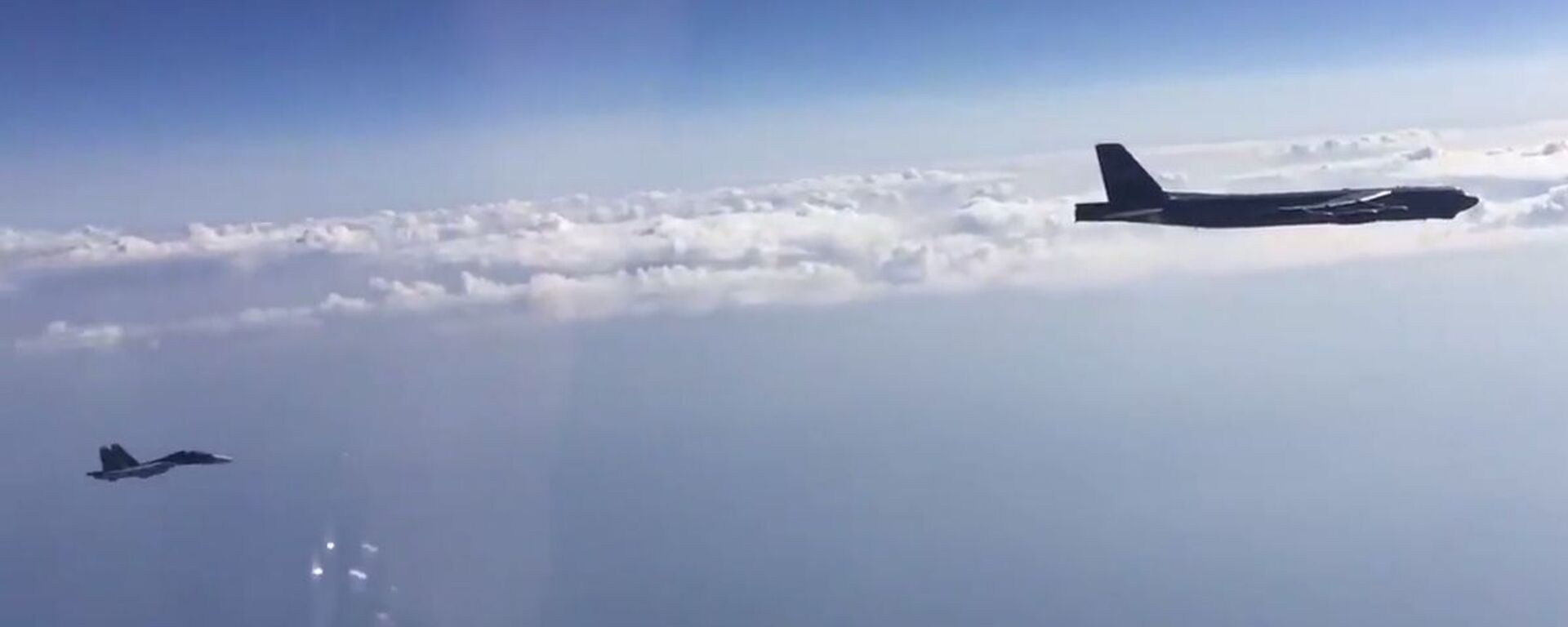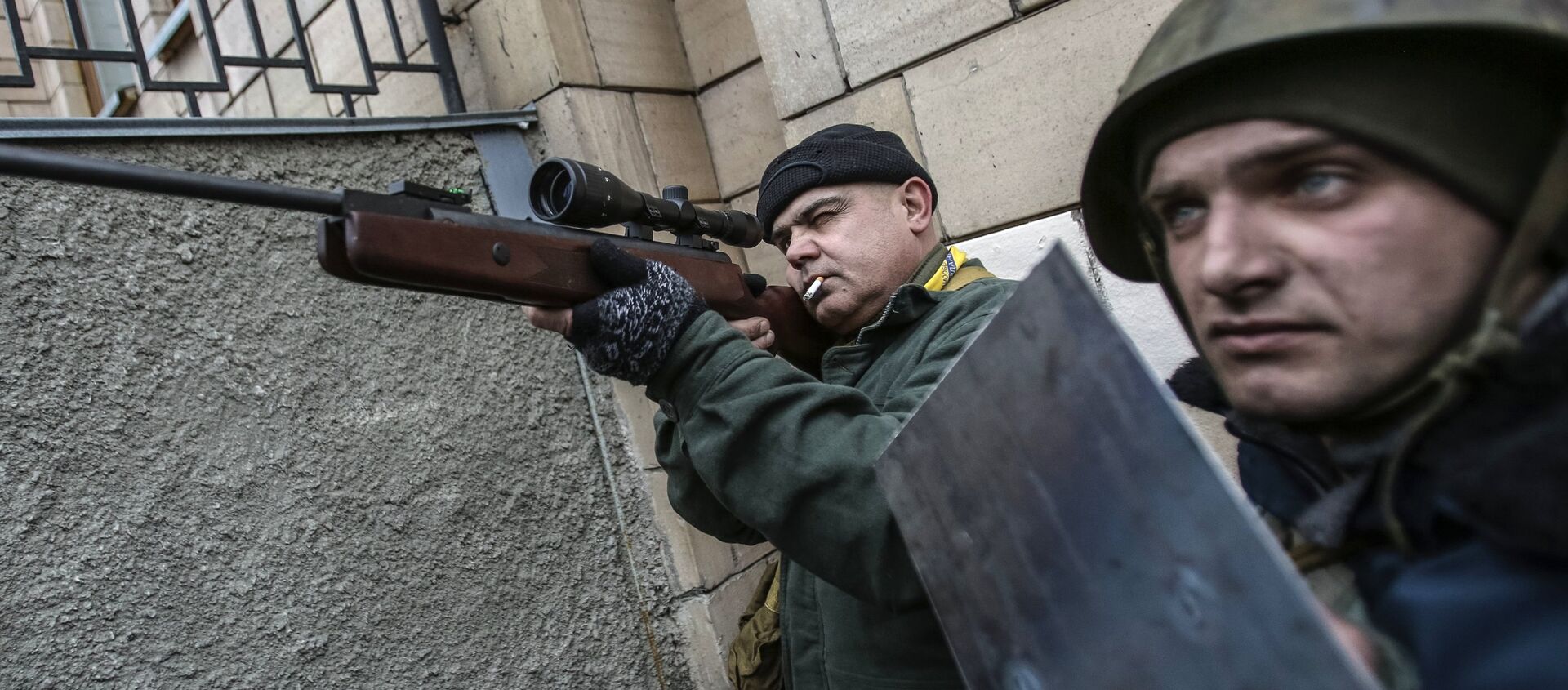US Media Reveal Why NATO Arms Aid to Ukraine Risks ‘Crossing a Bright Red Line’ With Russia
15:35 GMT 14.11.2021 (Updated: 16:56 GMT 14.11.2021)

© REUTERS / Baz Ratner
Subscribe
The United States and its NATO allies have delivered hundreds of millions of dollars’ worth of military aid to Ukraine since 2014, including both non-lethal equipment and advanced weapons. Russia has expressed concerns that these arms could be used by Kiev to thaw the frozen civil conflict in the country’s east.
The US and NATO provision of weapons to Ukraine and the bloc’s diplomatic efforts to give Kiev the illusion that it enjoys strong Western backing are a recipe for disaster, Cato Institute senior fellow and National Interest contributor Ted Galen Carpenter fears.
In a recent analysis for the paleoconservative news magazine, Carpenter warned that Western leaders’ pursuit of “a reckless strategy” in Ukraine has been “generating increasingly pointed warnings from Kremlin officials," and facilitating the alleged buildup of Russian troops on the border.
“Arms sales are only one component of the growing support for Kiev on the part of the United States and some of its NATO allies. President Joe Biden has repeatedly expressed Washington’s commitments to Ukraine’s sovereignty and territorial integrity against ‘Russian aggression.' US and Ukrainian troops have conducted joint military exercises (war games) on several occasions, and Ukraine’s forces have been included in NATO’s military exercises. Indeed, Ukraine hosted the latest version of those manoeuvres in September 2021. In response to Washington’s pressure, Ukraine is being treated as a NATO member in all but name,” the observer noted.
Calling such policies “needlessly destabilizing,” Carpenter pointed out that Ukrainian officials including President Volodymyr Zelensky have taken advantage of the expressions of support by “making jingoistic statements about regaining Crimea,” which broke off from Kiev in March 2014 following a Western-backed coup d’etat in Kiev, and by threatening to “crus[h] the separatists in Donbass.”
Russian officials have stated repeatedly that Moscow has no plans to invade any country, including Ukraine, with Kremlin spokesman Dmitry Peskov telling reporters on Friday that “Russia doesn’t threaten anyone,” and that “the movement of troops on our territory should be a cause for anyone’s concern.”
Peskov’s comments followed claims over the past two weeks by US officials and media about a ‘buildup of Russian forces’ near Ukraine. In early November, Politico published satellite photos ostensibly showing Russian military equipment in Russia’s Smolensk region – over 250 km from the Ukrainian frontier and over 800 km from the frozen eastern Ukraine conflict zone, and claiming it be evidence of a buildup.
In any event, Carpenter believes that Kiev should realize that its military is “no match for Russia’s in terms of either quantity or quality,” and that any confrontation which may lead to Russian involvement is futile. The analyst warned however, that “a belief in US or NATO military support may cause Ukrainian leaders to abandon prudence and mount an ill-starred confrontation.”
The danger of such a scenario was demonstrated in the case of Georgia, according to the observer, and the August 2008 misadventure which saw Washington egging on Georgian President Mikheil Saakashvili to invade the breakaway region of South Ossetia. The invasion led to the deaths of ten Russian peacekeeping troops, who had been deployed in the region in the early 1990s to separate the two sides, and prompted Moscow to launch a full-scale counteroffensive that crushed the US-armed and trained Georgian forces and led South Ossetia and Abkhazia, another Georgian breakaway, to formally declare independence.
“The parallels between [the Georgian] fiasco and current Western, especially US, policy regarding Ukraine are alarming,” Carpenter suggested, pointing out that while the Obama administration “apparently understood” the danger of weapons triggering a conflict and limiting US arms deliveries to ‘non-lethal’ items, his successors, including Donald Trump and Joe Biden, failed to heed the warning.
Between 2017, 2019, and again in 2021, the US sent tens of millions of dollars in Javelin anti-tank missiles to Kiev. In 2019, Washington’s Turkish allies delivered a dozen Bayraktar TB2 drones to the country, with the Ukrainian military deploying the drones in Donbass for the first time in late October and announcing plans to purchase more Bayraktar in 2022.
Other NATO defence deliveries have included US-made sniper rifles, US Humvee armoured personnel carriers and artillery-locating mobile radars, British-made Saxon armoured command centres used for artillery fire support, Czech 152mm howitzers, and Italian and German engineering and medevac vehicles.
Carpenter urged the US and its NATO allies to “back away from their increasingly dangerous policies” in Ukraine, suggesting that Moscow “has made it clear multiple times that it regards Ukraine as a core Russian security concern,” and pointing out that recent “efforts to make that country a Western military ally risk crossing a bright red line.”
“Adopting measures that encourage a volatile client to engage in provocations that it can’t sustain if its stronger adversary responds by escalating the confrontation is egregious foreign policy malpractice. Arming Ukraine with sophisticated weaponry is a textbook example of such folly,” the analyst suggested. “The United States, Turkey, and Kiev’s other enablers need to change course before they turn the simmering Ukraine conflict into a conflagration,” he warned.
The conflict in Ukraine began in February 2014, when pro-Western, ultranationalist US and EU-backed protesters in Kiev overthrew the country’s unpopular but democratically elected government and set a course for its integration with the European Union. In March, the majority ethnic Russian region of Crimea – which had been part of Russia until it was handed over to Soviet Ukraine by Nikita Khrushchev in an administrative reshuffle in 1956, voted in a referendum to break off from Ukraine and rejoin Russia. In April 2014, when local officials and residents in the eastern Ukrainian regions of Donetsk and Lugansk began demanding greater autonomy or even independence from the new authorities in Kiev, the government responded by sending troops to crush the resistance, sparking a bloody civil war which has left over 13,000 people dead, tens of thousands more injured, and caused nearly 2.5 million people to flee their homes.
The conflict in eastern Ukraine was frozen thanks to ceasefire negotiations in Minsk, Belarus in February 2015, with the Minsk protocols providing a mechanism through which Kiev could restore its control over the rebellious territories while providing the latter with constitutionally-mandated autonomy status. The ceasefire’s provisions and agreements reached since, ban the deployment and use of weapons in and near settlements, as well as offensive, reconnaissance and sabotage mission operations, and the use of drones, in the conflict area. In the nearly seven years since the ceasefire was signed, Kiev and the Donbass militias have accused one another of violating the agreement thousands of times.




